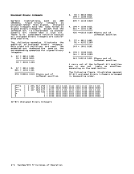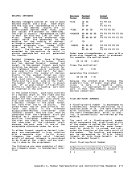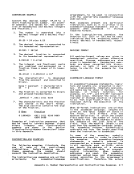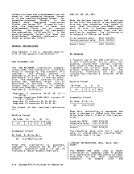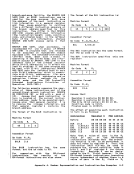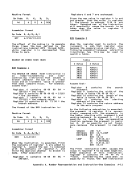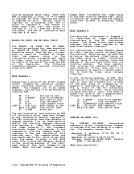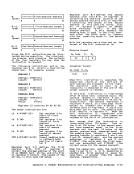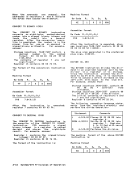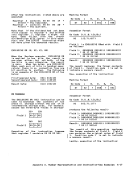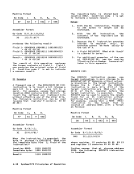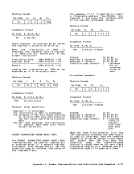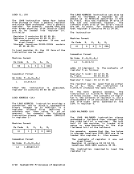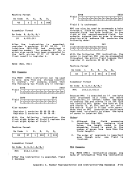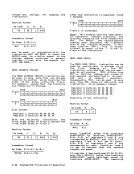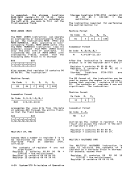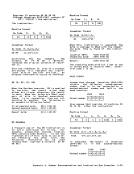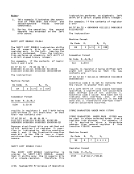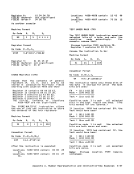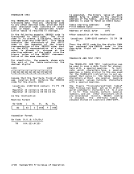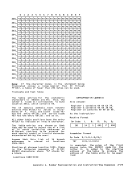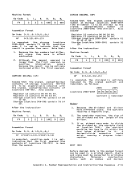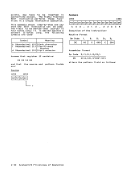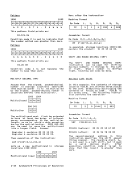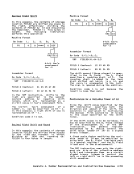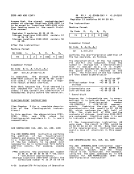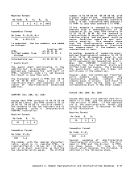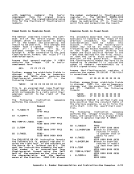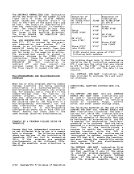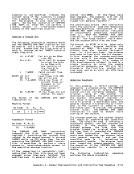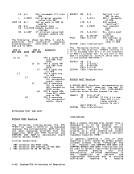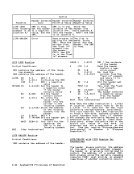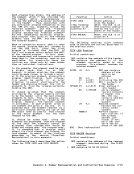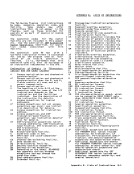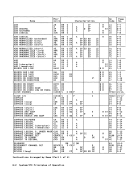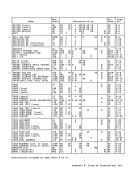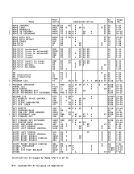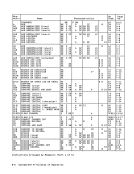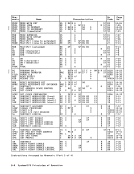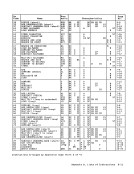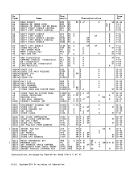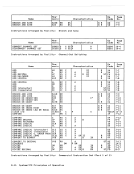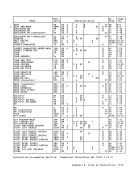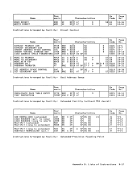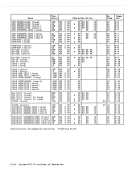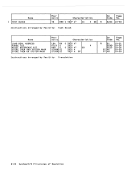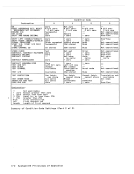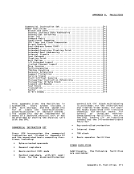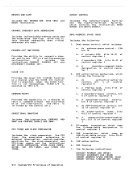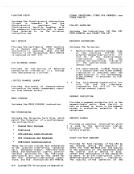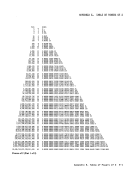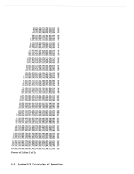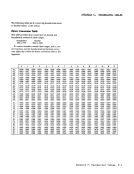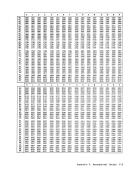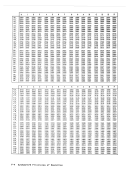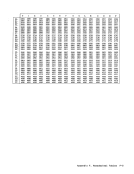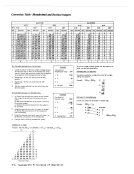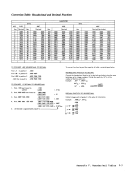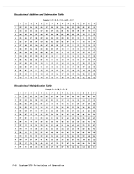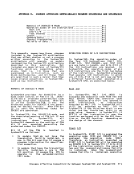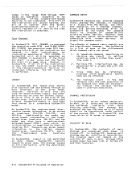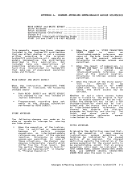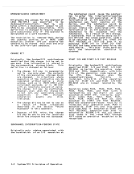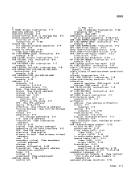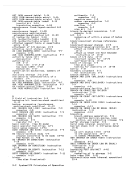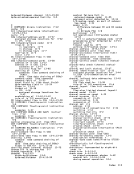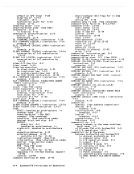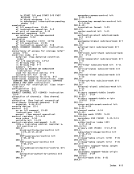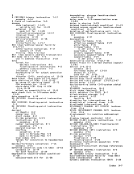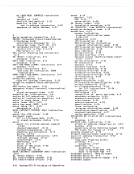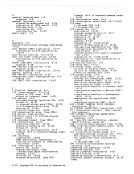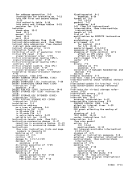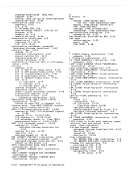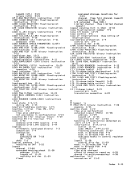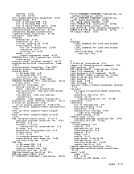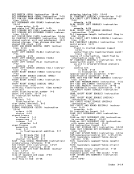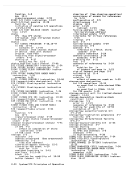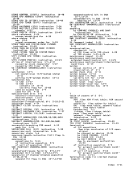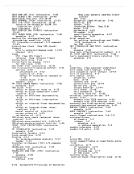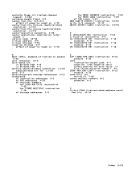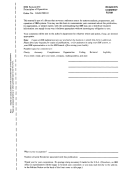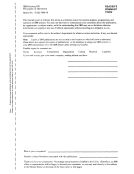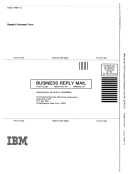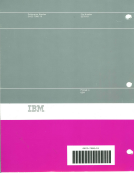of the first-operand and second
operand lengths.
When the second-operand length is
one or zero, destructive overlap
cannot exist.
7. Special precautions should be taken
ifMOVE LONG is made the target of
EXECUTE. 5ee the programming note
concerning interruptible instruc
tions under EXECUTE.
8. Since the execution ofMOVE LONG is
interruptible, the instruction
cannot be used for situations where
the program must rely on uninter
rupted execution of the instruction
or on the interval timer not being
updated during the execution of the
instruction. Similarly, the
program should normally not let the
first operand ofMOVE LONG include
the location of the instruction or
of EXECUTE because the new contents
of the location may be interpreted
for a resumption after an inter
ruption, or the instruction may be
refetched without an interruption.
9. Further programming notes concern
ing interruptible instructionsare included in the section "Interrup
tible Instructions" in Chapter 5,"Program Execution." MOVE NUMERICS
[55]
'D1 ' LI ~~ B2 I B, I ~_, --L.-_L-- o 8 16 20 32 36 47
The rightmost four bits of each bytein the second operand are placed in the rightmost bit positions of the corre
sponding bytes in the first operand.
The leftmost four bits of each byte in
the first operandremain unchanged. Each operand is processed left to right. When the operands overlap, the result is
obtained as if the operandswere proc essed one byte at a time and each result
byte were stored immediately after
fetching the necessary operandbytes. Condition Code:
unchanged.
ProgramExceptions: The code remains
Access (fetch, operand 2; fetch and
store, operand 1)
1. An example of the use of theMOVE NUMERICS instruction is given in
Appendix A.
2.MOVE NUMERICS moves the numeric
portion of a decimal-data field
that is in the zoned format. The
zoned-decimal format is described
in Chapter 8, "Dec i ma 1
Instructions." The operands are
not checked for valid sign and
digit codes.
3. Accesses to the first operand ofMOVE NUMERICS consist in fetching
the rightmost four bits of each
byte in the first operand and
subsequently storing the updated
value of the byte. These fetch and
store accesses to a particular byte
do not necessarily occur one -imme
diately after the other. Thus,
this instruction cannot be safely
used to update a location in stor
age if the possibility exists that
anotherCPU or a channel may also
be updating the location. An exam
ple of this effect is shown forOR (01) in the section "Multiprogram
ming and Multiprocessing Examples"
in Appendix A.MOVE WITH OFFSET MVO Dt(Lt,Bt),D2(L2,B2) [SS]
'F1'I L, I L2 I B, I ~, B2 ~~ 0 8 12 16 20 32 36 47
The second operand is placed to the left
of and adjacent to the rightmost four
bits of the first operand.
The rightmost four bits of
operandare attached as the
bits to the second operand,
operand bits are offset by
positions, and the result isthe first-operand location.
the first
rightmost
the second
four bit
placed at
The result is obtained as if the oper
ands were processed right to left. When
necessary, the second operand is consid
ered tobe extended on the left with
zeros. If the first operand is too
short to contain all of the second oper
and, the remaining leftmost portion of
the second operand is ignored. Access
exceptions for the unused portion of the
second operand mayor may not be indi
cated.
When the operands overlap, the result is
obtained as if the operands were proc
essed one byte ata time, as if each
result byte were stored immediately
Chapter 7. General Instructions 7-27
operand lengths.
When the second-operand length is
one or zero, destructive overlap
cannot exist.
7. Special precautions should be taken
if
EXECUTE. 5ee the programming note
concerning interruptible instruc
tions under EXECUTE.
8. Since the execution of
interruptible, the instruction
cannot be used for situations where
the program must rely on uninter
rupted execution of the instruction
or on the interval timer not being
updated during the execution of the
instruction. Similarly, the
program should normally not let the
first operand of
the location of the instruction or
of EXECUTE because the new contents
of the location may be interpreted
for a resumption after an inter
ruption, or the instruction may be
refetched without an interruption.
9. Further programming notes concern
ing interruptible instructions
tible Instructions" in Chapter 5,
[55]
'D1 ' L
The rightmost four bits of each byte
sponding bytes in the first operand.
The leftmost four bits of each byte in
the first operand
obtained as if the operands
byte were stored immediately after
fetching the necessary operand
unchanged.
Program
Access (fetch, operand 2; fetch and
store, operand 1)
1. An example of the use of the
Appendix A.
2.
portion of a decimal-data field
that is in the zoned format. The
zoned-decimal format is described
in Chapter 8, "Dec i ma 1
Instructions." The operands are
not checked for valid sign and
digit codes.
3. Accesses to the first operand of
the rightmost four bits of each
byte in the first operand and
subsequently storing the updated
value of the byte. These fetch and
store accesses to a particular byte
do not necessarily occur one -imme
diately after the other. Thus,
this instruction cannot be safely
used to update a location in stor
age if the possibility exists that
another
be updating the location. An exam
ple of this effect is shown for
ming and Multiprocessing Examples"
in Appendix A.
'F1'
The second operand is placed to the left
of and adjacent to the rightmost four
bits of the first operand.
The rightmost four bits of
operand
bits to the second operand,
operand bits are offset by
positions, and the result is
the first
rightmost
the second
four bit
placed at
The result is obtained as if the oper
ands were processed right to left. When
necessary, the second operand is consid
ered to
zeros. If the first operand is too
short to contain all of the second oper
and, the remaining leftmost portion of
the second operand is ignored. Access
exceptions for the unused portion of the
second operand mayor may not be indi
cated.
When the operands overlap, the result is
obtained as if the operands were proc
essed one byte at
result byte were stored immediately
Chapter 7. General Instructions 7-27
























































































































































































































































































































































































































































